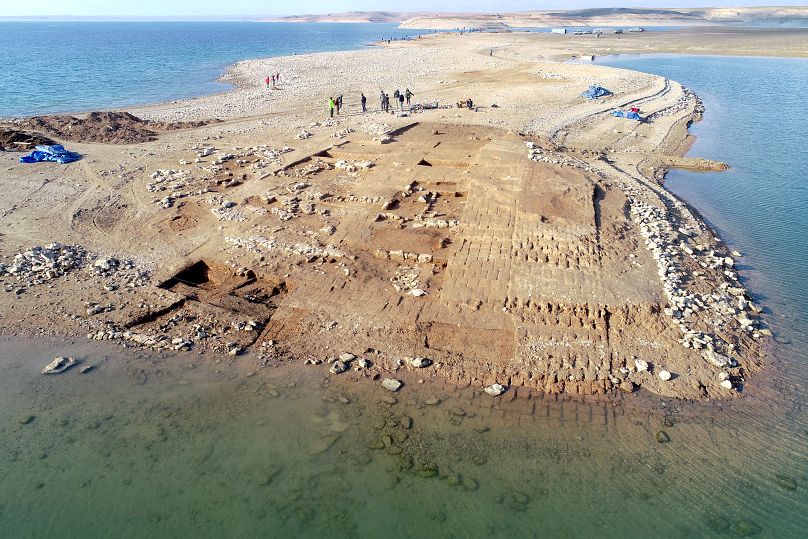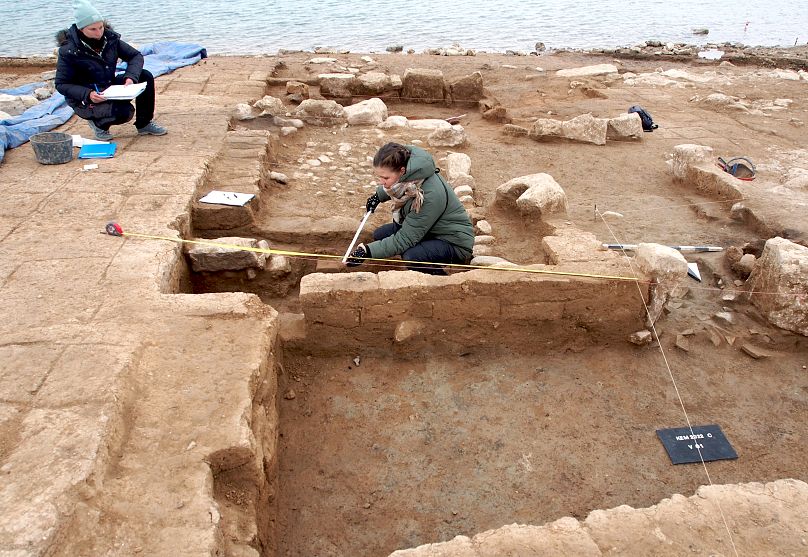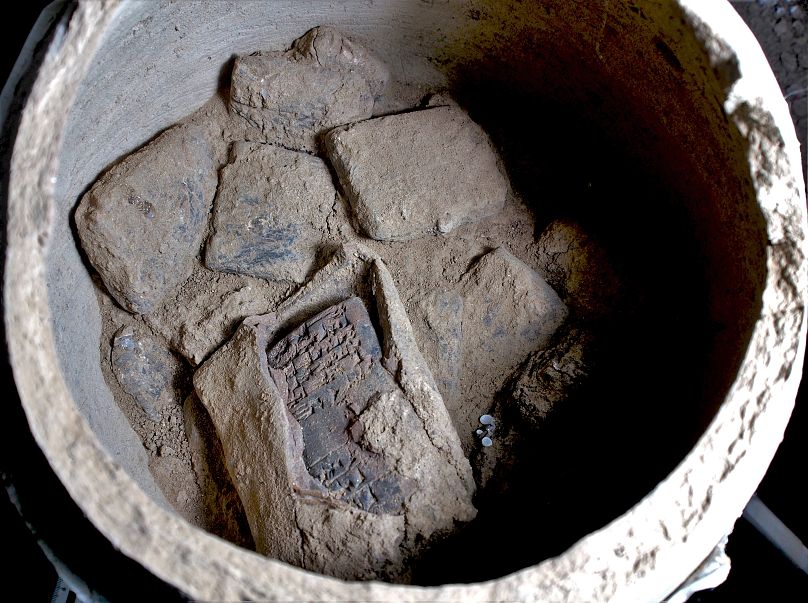Archaeologists rushed to document the site before it was submerged below the water again.
Earlier this year, the remains of a 3,400-year-old city emerged from a reservoir in Iraq after months of extreme drought.
German and Kurdish archaeologists uncovered the ancient settlement from the Mittani Empire when water levels fell rapidly. It was once located on the banks of the Tigris River and is believed to have been the city of Zakhiku, an important centre for the Mittani Empire which lasted from around 1550 to 1350 BC.
Researchers were shocked to discover well-preserved walls made from sun-dried mud bricks. Some had been underwater for 40 years since the Mosul Dam was built and the reservoir created.
They attribute this surprising preservation to an earthquake that destroyed the city in 1350 BC when the upper parts of the walls collapsed, burying the buildings completely.
Extreme drought in Iraq
Iraq has been severely impacted by climate change. Average temperatures have risen by nearly 1℃ over the last century.
Extreme heat has seen the south of the country, in particular, suffer from months of drought. A lack of rainfall and poor resource management has left communities in the region struggling for water.
The Mosul Dam reservoir, in the Kurdistan region, is the country’s most important water storage location. Earlier this year, authorities drained part of it to prevent crops from drying out, causing levels to drop dramatically.
From below the surface, the Bronze Age city emerged.
Archaeologists from the University of Freiburg and University of Tübingen in Germany and the Kurdistan Archaeology Organisation were under heavy pressure to document and excavate not knowing when it might be resubmerged.
What did archaeologists discover in the submerged city?
When drought also caused the city to emerge from the waters back in 2018, an ancient palace was extensively documented - but there was still much more to be discovered.
In just a few days, the archaeologists successfully mapped most of the city including what is believed to be an industrial complex, fortifications with walls and towers and a large storage building.
“The huge magazine building is of particular importance because enormous quantities of goods must have been stored in it, probably brought from all over the region," says Ivana Puljiz from the University of Freiburg.
"The excavation results show that the site was an important centre in the Mittani Empire," adds Hasan Qasim, chairman of the Kurdistan Archaeology Organisation.
The team also uncovered artefacts that paint a better picture of what life was once like living on the banks of the Tigris. They found five ceramic vessels containing over 100 cuneiform tablets, a system of writing used in the ancient Middle East.
"It is close to a miracle that cuneiform tablets made of unfired clay survived so many decades underwater," explains Peter Pfälzner from the University of Tübingen.
Researchers hope these ancient writings, which date to shortly after the earthquake struck the city, will provide important information about life in the region at the end of the Mittani Empire.
Now resubmerged below the waters of the reservoir, the important site is covered with tight-fitting sheets of plastic to protect the walls and any other important finds still hidden in the ruins from further damage.














